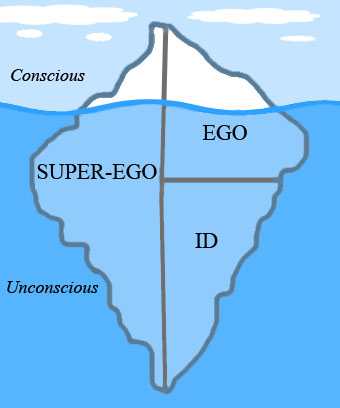

The death instinct, on the other hand, is expressed through aggression, with the rationale being that it mirrored the life instinct by being a desire to send organic life back into death. More generally, it encompasses a desire to bring organic life into fruition and fulfillment the fulfillment part has it encompass anything pleasurable. The life instinct is the desire to create, and if you're familiar with the works of Freud you'll know what kind of "creation" it's referring to. The Id has no judgments of anything there is no good or evil and no sense of morality at all.įreud described the Id has having two basic instincts that are opposite but equally present: the life instinct and the death instinct. The Id is, by definition, both completely disorganized and completely unconscious: no one is capable of intentionally acting on pure Id. With Id alone, humankind is essentially no better than any other animal. Simply put, the Id comprises the basic, instinctual drives, acting according to the "pleasure principle". Note that the human brain is generally not considered massively modular, but uses a lot of distribution of functions hence Freud's metaphors remain useful for conceptions in which thinking of the human brain as wiring is not helpful. The superego is seen as the seat of moral reasoning developmentally, this corresponds to the last layers of cells that mature in the frontal cortex. The superego can be found in the inhibitory processes of the brain rather than a structure, it exists as schema, or mental structures, that influence how we interpret information. The ego might be thought of as the main processing regions of the brain your frontal cortex is particularly important in explicit decision-making.


In a neuroscientific sense, the id corresponds roughly to the lower brain, the limbic system and the area of the amygdala, controlling basic urges and fight-or-flight responses. Just as neo-Freudian thinking is on the way out, modern neuroscience is on the way in that is fitting, as Freud as himself a doctor. Theories have moved on, but the idea of these psychological systems, described by Sigmund Freud and elaborated on by others, including his daughter Anna, remain a part of the vocabulary. There's a much deeper narrative embedded in it that makes it so relatable to each individual - the struggle to balance your desires with what's right.Note that in modern psychology, these terms are not always used in a technical analytic sense, though they are still used. So, the film is not just about youth, friendships and how your life changes as you grow up. The ego is what strikes a balance between the two extremes and makes decisions trying to satisfy both.Īs you might have guessed, Akash represents id, Sid represents superego and Sameer represents the ego!

The superego is the angel that is always yearning for what is morally right. The id is the devil that deals with impulses and follows the principle of immediate gratification - food, sex and aggression. The Freudian iceberg theory is about the three states of your mind - the id, the superego, and the ego.
#Id ego superego examples in movies movie#
Now, a Youtube channel, Cinema Beyond Entertainment, has psychoanalysed the Bollywood movie and come up with an interesting perspective using Freudian theory. To date, the film remains as impactful as it was back in 2001 with characters Akash, Sameer and Sid etched in everyone's memories. It has been 15 years since Dil Chahta Hai hit theatres and redefined friendship goals for all of us (admit it, you planned that ‘spontaneous’ Goa trip). Here's an interesting psychological perspective on the iconic film.


 0 kommentar(er)
0 kommentar(er)
